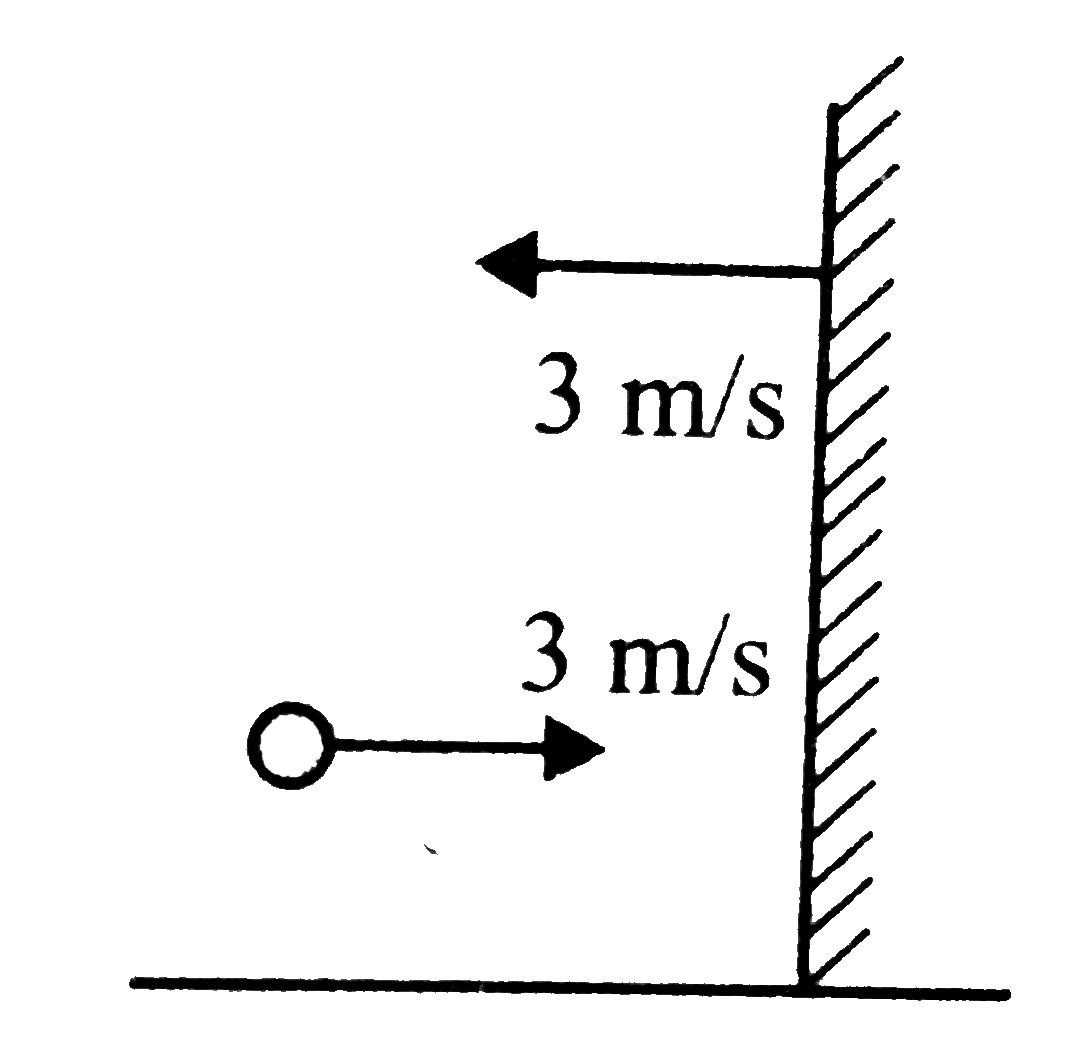Two balls roll towards each other. The red ball has a mass kg 0.5 kg and a speed of 4 m/s just before impact. The green ball has a mass of 0.3 kg and a speed of 2m/s. after the head-on collision, the red ball continues forward with a speed of 2m/s. find the speed of the green ball after the collision. was the collision elastic?
First remember that momentum is a vector quantity, so the direction of the velocity is crucial. Since the balls roll toward each other, one ball has a positive velocity while the other has a negative velocity. Let's call the red ball's velocity before the collision positive, then vred=+4m/s,andvgreen=−2m/s. using a prime (') to denote after the collision, conservation of linear momentum gives us the following:
total pbefore=total pafter
mredvred+mgreenvgreen=mredvred'+mgreenvgreen'
(0.5)(+4)+(0.3)(−2)=(0.5)(+2)+(0.3)vgreen'
vgreen'=+1.3m/s
Topper's Solved these Questions
Similar Questions
Two balls roll toward each other. The red ball has a mass of 0.5 kg and a speed of 4m/s just before impact. The green ball has a mass of 0.3 kg and a speed of 2 m/s. if the collision is perfectly inelastic, determine the velocity of the composite object after the collision.
View SolutionA highly elastic ball moving at a speed of 3m/s approaches a wall moving towards it with a speed of 3m/s. After the collision. the speed of the ball will be

View Solution
Knowledge Check
A highly elastic ball moving at a speed of 3m/s approaches a wall moving towards it with a speed of 3m/s. After the collision. the speed of the ball will be
 A3m/sB6m/sC9m/sDzero
A3m/sB6m/sC9m/sDzeroA ball of mass 5 kg travelling with velocity of 15 cm/s makes a head on collision with another ball of mass 1 kg which is at rest. After the collision, the speed of the lighter ball is
Azero.Bless than 15 cm/s.Cequal to 15 cm/s.Dgreater than 15 cm/s.A ball moving with a speed of 10 m s−1 strikes an identical ball such that after the collision the direction of each ball makes an angle 45∘ with the original line of motion. Find the speeds of the two balls after the collision.
Av1=5√2 m/s,v2=10√2 m/sBv1=10√2 m/s,v2=10√2 m/sCv1=5√2 m/s,v2=5√2 m/sDv1=3√2 m/s,v2=10√2 m/s
A ball moving with a speed of 9m/s strikes an identical ball at rest, such that after the collision, the direction of each ball makes an angle of 30∘ with the original line of motion. Find the speeds of the two balls after collision.
View SolutionA ball moving with a speed of 9ms−1 strikes an identical stationary ball such that after the collision the direction of each ball makes an angle of 30∘ with the original line of motion. The speeds of two balls after the collision is
View SolutionA ball of 4kg mass moving with a speed of 3ms−1 has a head on elastic collision with a 6kg mass initially at rest. The speeds of both the bodies after collision are respectively
View SolutionTwo objects, one of mass 3 kg and moving with speed of 2 m/s and the other of mass 5 kg and speed 2 m/s, move toward each other and collide head-on. If the collision is perfectly inelastic, find the speed of the object after the collision.
View SolutionA billiard ball moving with a speed of 5m/s collides with an identical ball, originally at rest. If the first ball stop dead after collision, then the second ball will move forward with a speed of:
View Solution
